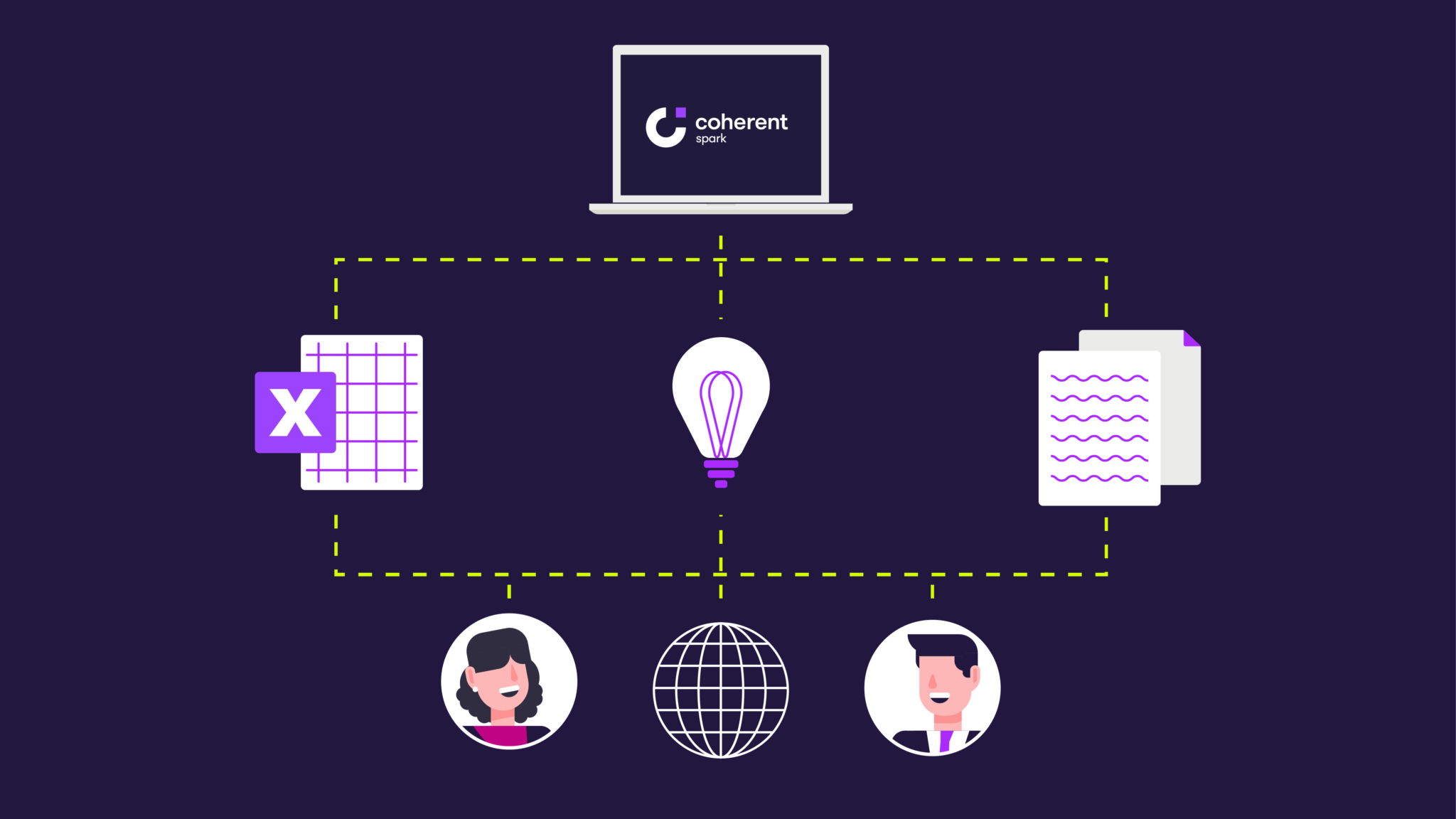Actuaries are best known as number crunchers, but may not always be seen as being at the forefront of technology. Why is that, and how do we change this perception?
The answer is Coherent Spark, a no-code solution that converts Excel models to APIs, for actuaries.
API stands for Application Programming Interface, which is the connector between computer programs. For example, in a mobile app each input from the user needs to be configured as to whether the data type is text or numeric – an API can achieve that. Equipped with strong analytical skills, how can an actuary without a computer science background create an API? Let us tell you how.
Transform Excel Logic to API in seconds!
My first API endpoint was born when I joined Coherent last year. The Coherent Actuarial team created a reflexive underwriting Excel tool; i.e. the underwriting questions depend on the answer to the preceding questions. Using my health product and underwriting knowledge, I amended the logic in the Excel file. For example, the details of family members with a history of family cancer should only be required if the customer declares “Yes” to the family cancer history question. I created this logic in Excel, uploaded the file to Spark – and guess what – I built my first API endpoint automatically in seconds!
I didn’t have to code by defining the data type (string, integer, float). I didn’t have to learn another programming language to capture the dynamic underwriting logic to generate an API. All I needed was to name the cells with Spark-ready syntax using the name range functionality of Excel.
Another example of the power of Spark is when one of our new team members built a simple front-end mobile underwriting app using Spark in his first week of joining Coherent. This is the speed and efficiency we expect when using Spark as well as from the actuaries at Coherent.
Actuarial Modelling Centre
My second project was to test the Spark capability with a typical actuarial use case – Risk-Based Capital (RBC) calculation – for a life insurance product, requiring 100-year monthly projections.
Most insurance companies in Asia determine their reserving and capital requirements under RBC and actuaries are tasked to calculate and sign off on these numbers. Even though most actuaries have developed RBC logic in Excel, they are mostly relying on actuarial software to complete the RBC calculation of the entire insurance portfolio due to the need for strong computing power, which is outside the realm of Excel.
And yet, parallel testing of actuarial software vs Excel is still required after each implementation of new product or after an update of RBC rules.
With Spark, parallel testing time is saved as Spark fully replicates the RBC calculation in Excel. The only effort is to make the Excel model Spark-ready, which typically takes less than 10 minutes, and to upload the Excel model onto cloud-based Spark to set off the production runs.
On the governance front, every model update will automatically trigger a version upgrade. With Spark-generated APIs, the Coherent actuarial team built a reserving dashboard to upload data, assumptions and set batch runs in Spark, before generating valuation reports – all by just calling API endpoints from Spark.

Robotic Process Automation (RPA)
My subsequent project was “founded” after speaking to a few actuaries working with Robotic Process Automation (RPA) tools. RPA tools are increasingly popular among insurers and actuaries to improve efficiency of processes that previously required manual intervention.
From these discussions I learned that RPA implementation time can sometimes be unnecessarily pro-longed due to scarce RPA coding resources in the market and that there can be a steep learning curve for existing resources to pick up a sophisticated RPA programming language. So, I embarked on a discovery journey with an actuarial colleague to explore the use of Spark in RPA tools.
Without having any prior RPA programming language skills, we used the RBC model from above and created an actuarial workflow within a day. The RPA partner was also pleased with how quickly we picked up their tool to tackle an actuarial problem.

Coherent Spark is technology and industry agnostic and it is easy to pick up and learn with less than 10 Spark syntax rules. It is no longer an unrealistic dream to master a cutting-edge technology, rather it is up to users, specifically actuaries, to unlock the value of technology and understand how it can help them to tackle the issues at hand.
Contact us to find out more about how Coherent Spark can be a game-changer for you.
Kay Shong
Director, Actuarial Modelling, Coherent
As Actuarial Director in Coherent, Kay is responsible for delivering Coherent solutions and advisory services to insurance companies in Asia. With more than 15 years of industry experience, her areas of expertise include business development, product development, pricing, customer insights, appointed actuary services, financial modelling and economic valuation of life insurance companies.
-
This author does not have any more posts.





